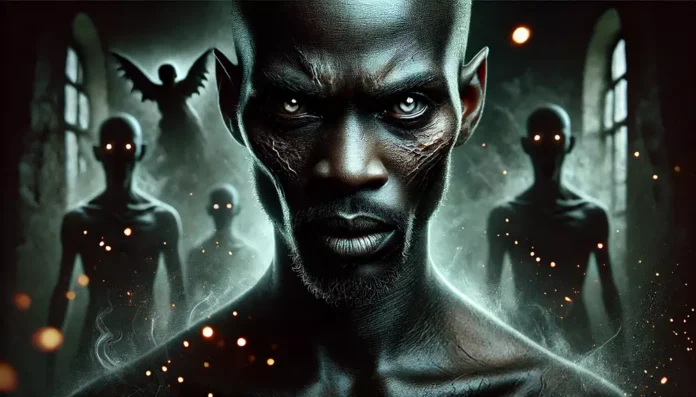Introduction
In the lore of the Ewe people of West Africa, particularly in Togo and Ghana, the Adze stands as a mysterious figure of fear and caution. Unlike Western vampires, this creature can transform into a firefly, slipping unnoticed through the night, draining life energy from unsuspecting victims. Known to prefer vulnerable targets like children, the Adze is more than a supernatural threat; it embodies fears of disease and unexplained death, especially in rural communities. This vampiric spirit has evolved through the ages, but its legend endures, reminding people of the dangers lurking in the darkness.

History/Origin
The Adze, a supernatural creature rooted in the folklore of the Ewe people of Ghana and Togo, is one of Africa’s unique contributions to vampire mythology. In its original lore, the Adze isn’t a creature of the night like European vampires but a shapeshifting spirit that preys on its victims both physically and spiritually. The concept of the Adze dates back centuries, developed as a way for communities to explain sudden illness, death, and other misfortunes. This folklore served as a form of social cohesion, where the fear of supernatural punishment helped enforce moral and cultural boundaries within the community.
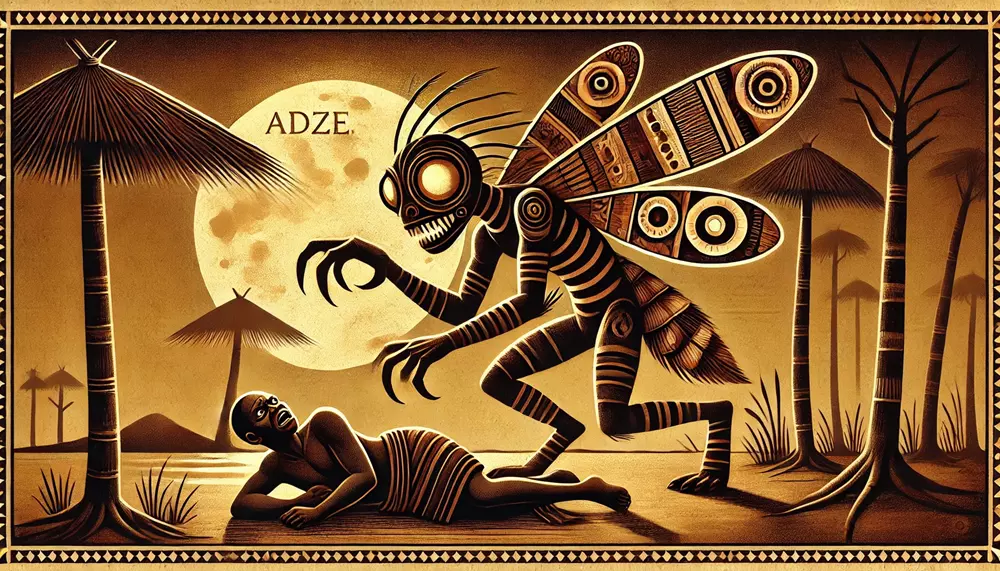
During colonial times, European accounts began documenting these tales, though often with a distorted lens. Colonial writers sometimes sensationalized or misunderstood the Adze, seeing it through the Western lens of “witchcraft” and “vampirism.” The Adze legend persisted despite these reinterpretations, embedding itself as a staple of West African folklore and shaping the region’s understanding of malevolent forces.
“The Adze seeks neither blood nor flesh alone; it hungers for the very spirit of those it visits.” (Traditional Ewe Proverb)
Name Meaning
The name “Adze” itself doesn’t convey a sense of bloodlust as in other vampire legends. In Ewe culture, it more likely refers to a general sense of malice or a spirit with malevolent intent. The word invokes fear among the Ewe, as it symbolizes a being that operates unseen, one that is an unsettling reminder of life’s fragility. Though there isn’t a specific direct translation, the term has become synonymous with danger and spiritual menace in Ewe-speaking regions.
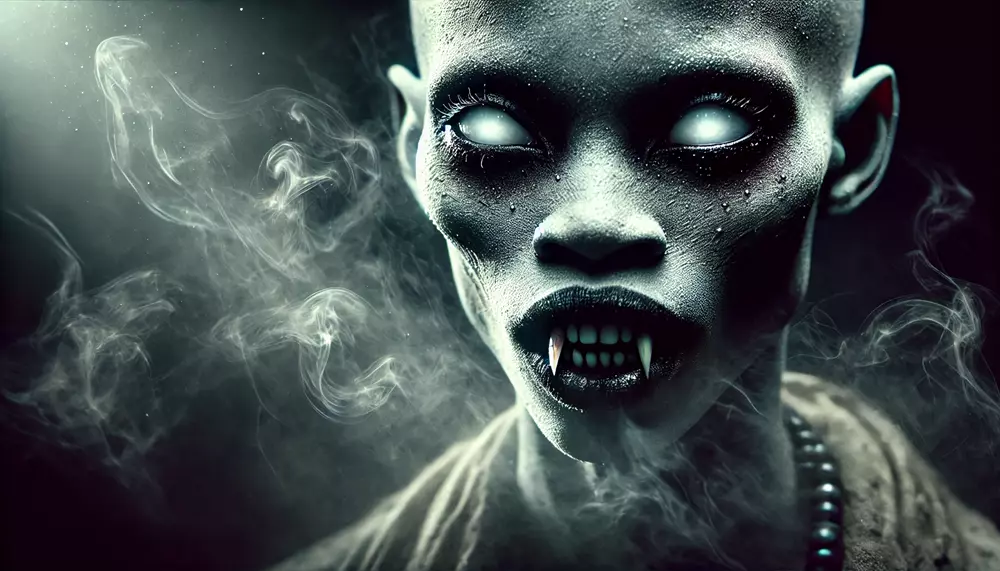
Interestingly, “Adze” also aligns with an African belief that certain beings hold dual forms, traversing the line between human and spirit. For locals, the name alone encapsulates a powerful understanding of the supernatural as both part of their reality and their culture’s protective beliefs.
Background Story
The legend of the Adze describes it as a being with the ability to transform into a firefly, allowing it to sneak into homes and drain people’s life force. The Adze’s primary targets are often children or those in vulnerable states. The creature, while small and seemingly harmless as a firefly, gains sinister power when it assumes human form after capture. In its human shape, the Adze supposedly possesses people, turning them into witches who spread chaos in their communities.
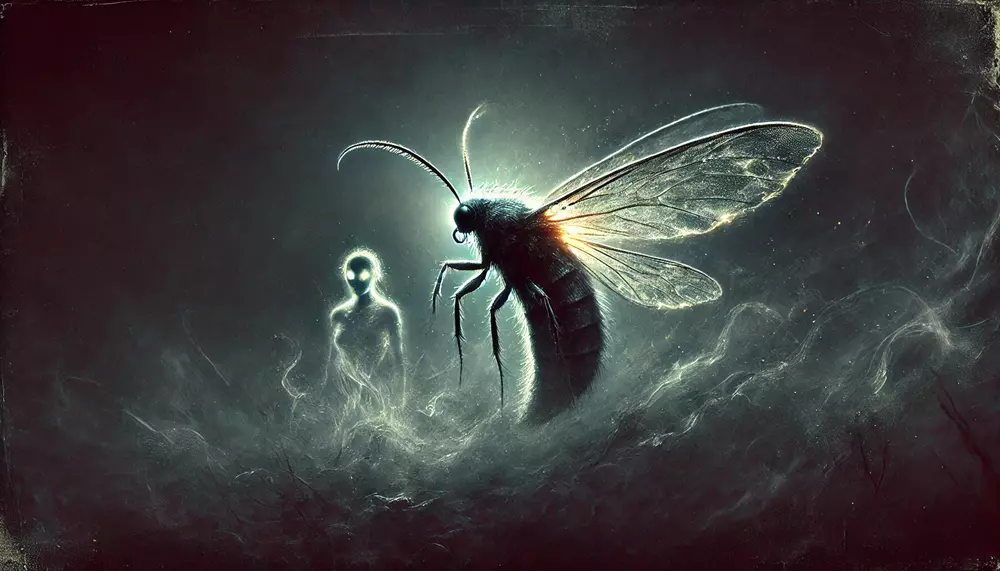
Stories tell of villagers hearing a strange humming or fluttering sound before an outbreak of illness or misfortune. This noise is said to signal the presence of an Adze nearby, lurking in the shadows, watching and waiting. Legends like these serve as cautionary tales, warning people to remain vigilant against invisible dangers, both supernatural and human.
Cultural Impact
The Adze legend is more than just a scary story; it reflects the values and concerns of the Ewe culture. The Adze became a symbol of spiritual intrusion, representing fear of the unknown and unexplained illnesses. In communities, this creature was used to reinforce the importance of community solidarity, warning individuals against betraying their neighbors or failing to uphold social harmony.
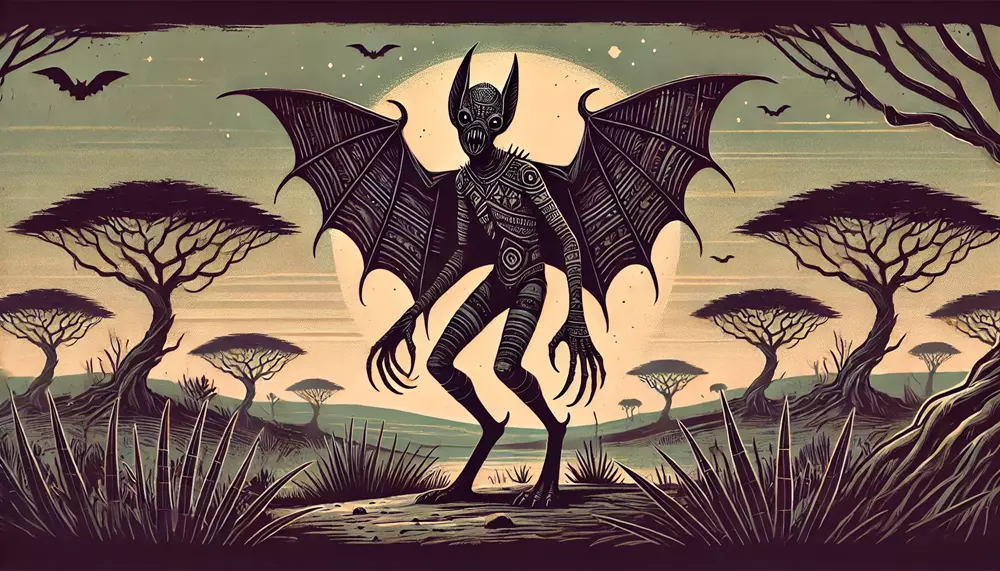
Over time, the Adze has come to symbolize the internal and external struggles individuals face within communities. The tale urges adherence to communal values and respect for traditional beliefs. By instilling these values, the legend helps preserve cultural identity across generations, as younger people learn about the dangers of malevolent spirits from elders.
Similar Beasts
The Adze has counterparts in other cultures, both within Africa and across the world. For instance, the Obayifo from Ghana is also a creature associated with blood-drinking and transformation. This being, like the Adze, is thought to bring illness to those it preys upon. The Sukuyan of Caribbean folklore is another vampire-like entity that transforms at night, often attributed to African spiritual traditions brought to the Caribbean by enslaved people.
In Europe, creatures like the vampire of Slavic folklore or the Strigoi from Romania share similar traits of nocturnal predation and the draining of life forces. These similarities showcase the universality of vampiric legends, with each culture adapting the concept to fit their societal concerns and environmental context.
“Beware those who hold two faces, for the night reveals their true form.” (Ewe Folklore Saying)
Religion/Ritual
The Ewe people have specific rituals to detect and repel the Adze. Witch doctors, known as nganga, are often summoned to identify those afflicted or possessed by the creature. Through chanting, incantations, and the use of protective charms, they attempt to drive the Adze out. These rituals are designed to cleanse both individuals and their households, making them safe from supernatural harm.
Villages also use mask ceremonies and communal gatherings to fortify their spiritual defenses. The masks, intricately carved and blessed by nganga, are believed to confuse the Adze or keep it at bay. Additionally, protective objects like iron tools and herbs with purifying properties are strategically placed around homes to repel malevolent spirits. These traditional practices reflect the deep-seated respect for spiritual forces within Ewe society.
Scientific or Rational Explanations
From a rational perspective, the Adze legend could be a cultural response to common diseases like malaria, which is spread by mosquitoes and could explain the association with “draining life.” The presence of fireflies, which appear in African nights, might have inspired the imagery of a glowing creature sneaking into homes. Combined with the high rate of malaria-related deaths, the legend of the Adze served as a personified warning of these unseen dangers.
Psychologists might interpret the Adze legend as a projection of societal fears and anxieties, particularly around health and illness. It’s common for communities to create myths that embody invisible threats, providing an explanation and a sense of control over inexplicable events. As such, the Adze can be seen as an early understanding of disease and contagion, embedded within the cultural context.
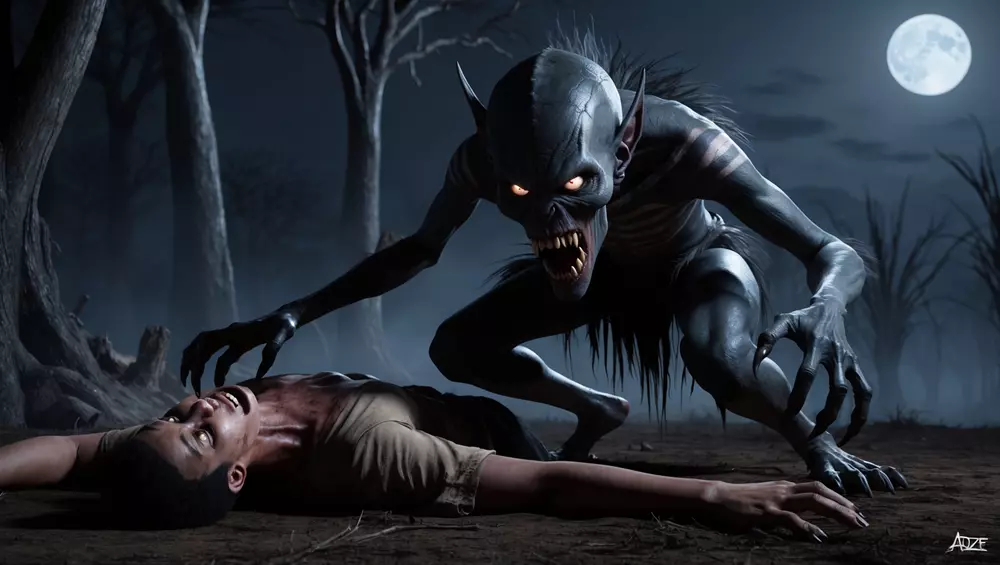
Modern Cultural References
Though not as globally popular as European vampires, the Adze has appeared in various forms of media, adding to its mythic allure:
Television: Grimm (Season 3, Episode 21): The supernatural drama series features a creature inspired by the Adze, depicted as a firefly-like entity that can possess humans, aligning with its traditional folklore characteristics.
Video Games: The Secret World: This MMORPG includes a creature resembling the Adze, portrayed as a demonic entity capable of possession, reflecting its mythological roots.
Literature: The Encyclopedia of Vampires, Werewolves, and Other Monsters by Rosemary Ellen Guiley: This reference book provides an entry on the Adze, detailing its origins and attributes within African folklore.
“A buzzing firefly isn’t always what it seems—beware the Adze’s approach, silent and unseen.” (Traditional Ewe Warning)
Conclusion
The Adze remains an enduring figure in West African folklore, embodying fears of illness, betrayal, and malevolence that are universally relatable. From its early roots among the Ewe people, the Adze has evolved to become a powerful representation of the African supernatural. Its presence in both traditional and modern media signifies the timeless allure of vampire legends, yet the Adze holds a unique identity, distinct from Western vampires.
The Adze, with its firefly disguise and vampiric thirst, stands as a reminder of the rich cultural narratives that shape our understanding of the unknown. It reflects the human need to explain life’s inexplicable tragedies and serves as a cultural touchstone, connecting past traditions with contemporary stories. As African myths like that of the Adze continue to spread, they enrich the global tapestry of folklore, reminding us that every culture has its own monsters, each bearing lessons of fear, respect, and resilience.

